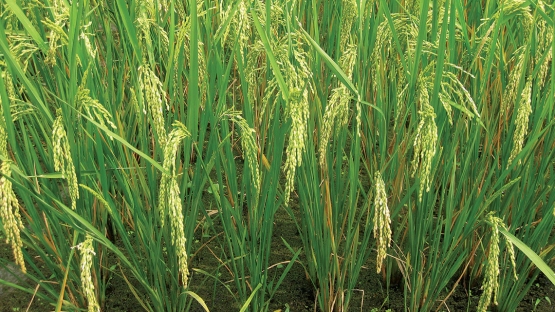Rice plays an extremely important part in the cuisine of Cuba and is the central ingredient of many of its national dishes. Cuba’s annual rice consumption is estimated as high as 60 kilograms per capita, meaning each person in the country eats more than a kilo of rice a week. To meet this demand, Cuba dedicates some 200 000 hectares (ha) of land to rice production, but, until recently, due to soil infertility and the high cost of chemical fertilizers, the yields were low and more than 55 per cent of the rice consumed was imported. However, a relatively unknown forage crop has changed that. After studying the soil and water situation in Cuba’s rice fields, the Joint FAO/IAEA Division worked with scientists and introduced farmers to sesbania, a tropical forage legume that can improve soil fertility through a process known as biological nitrogen fixation (BNF).
While globally rice fields were increasing steadily during the past decades, Cuba was seeing its rice productivity decrease to the point that its fields only produced enough to meet 45 per cent of consumer demand. As a result, the country was spending more than US $200 million a year to import rice. The government took a stand in support of its rice farmers, and in 2012, set a goal of increasing domestic rice production to 55 per cent of consumption by 2016.
The reason for the low yield was well recognized: soils were poor and needed fertilizer. However, Cuba did not produce fertilizer, and imported fertilizer was usually too expensive for poor, small-scale farmers to buy the in the amounts needed to improve their yields. The Joint FAO/IAEA Division, working with the Cuban Ministry of Agriculture, Instituto de Suelos, initiated efforts to introduce biological nitrogen fixation to Cuba’s rice fields.
Nitrogen is a major nutrient required for plant growth, and biological nitrogen fixation (BNF) refers to a process through which certain types of plants, mainly legumes, absorb nitrogen from the atmosphere, convert it into plant nitrogen and then their roots leave it in the soil as residue, which serves as a natural fertilizer that can be used by subsequent crops.


